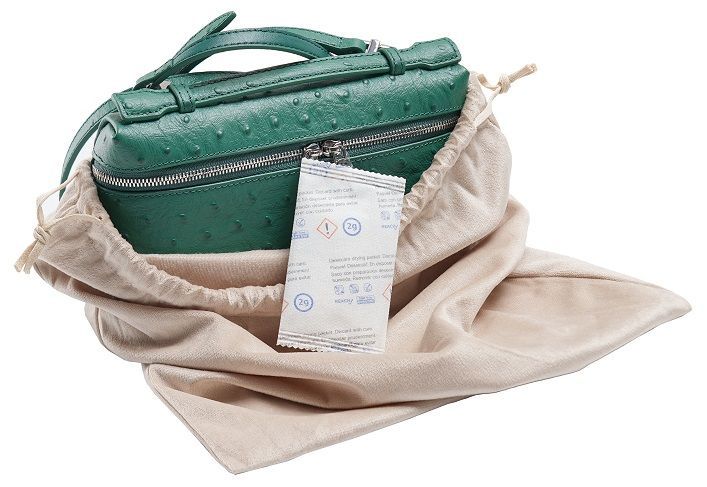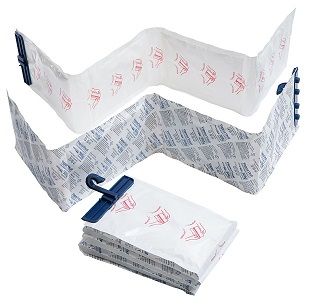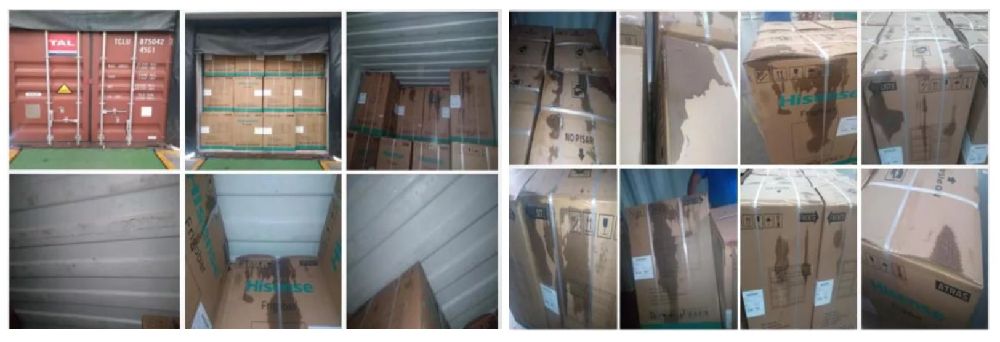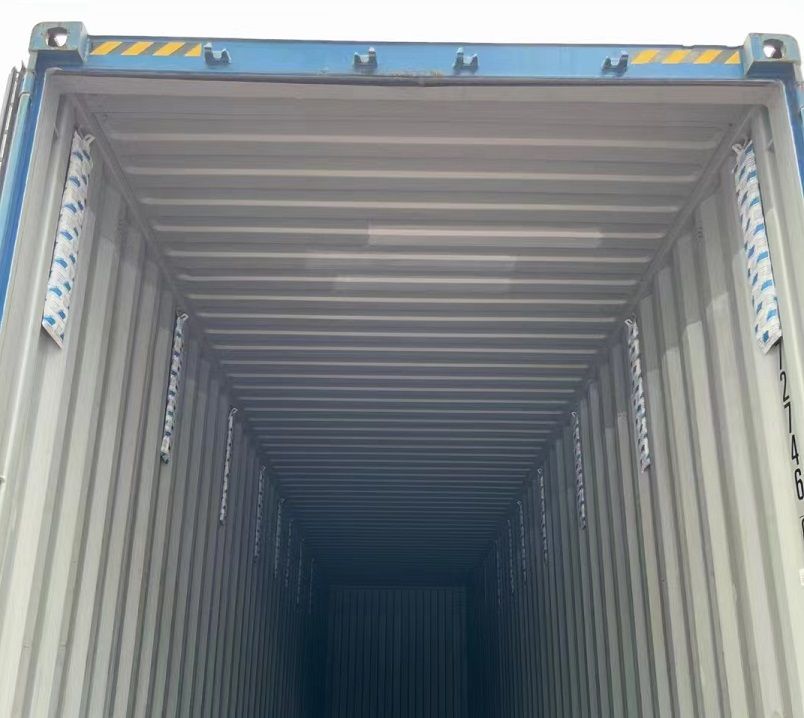Our global world relies heavily on shipping containers to transport goods across vast distances. One major challenge in this process is protecting cargo from moisture and humidity. Left unchecked, these factors can cause severe damage to goods, leading to losses, delays and reputational damage.
Desiccants, highly effective moisture-absorbing materials, are a simple but highly effective way to mitigate the risks. In this article we explore how desiccants protect cargo and why they are an essential component in shipping logistics and loss prevention.
What Are Desiccants?
Desiccants are materials designed to absorb (or, technically, ‘adsorb’ in some cases) and trap this moisture, thereby reducing humidity levels in enclosed spaces like containers. It’s highly likely you will have seen the small packets of ‘DO NOT EAT’ silica gel which are often packed together with items such as shoes to keep them ‘box fresh’ and free from water damage, but there are many other types which can also be used to control environmental moisture.
All types of desiccant function in much the same way, in that they remove moisture from the environment, although the precise form they take will vary. Desiccants can take the form of packets, pouches, strips, blankets, poles and bulk bags, depending on the type and application the desiccant is being used for.



Examples of container desiccant packs
Popular desiccant types include:
Silica Gel: Known for its non-toxicity, making it suitable for sensitive goods such as food and pharmaceuticals. It can ‘adsorb’ approximately 40% of its weight in moisture.
Montmorillonite Clay: a capable absorber of moisture with the added benefit of being an environmentally friendly natural product derived from clay.
Calcium Chloride: Highly effective at absorbing large quantities of moisture, they can absorb up to 300% of its weight in water, for larger enclosures
Activated Carbon: Offers dual benefits of moisture and odour absorption.
The Moisture Problem in Shipping Containers
Shipping containers face a particular moisture control risk, as container ships are subject to constant environmental changes in different climes, conditions and seasons. This is especially the case during longer sea voyages or cross-continental transit. Fluctuating temperatures and humidity levels create ideal conditions for condensation to form inside containers – a phenomenon often called “container rain,” as the water condenses into droplets and ‘rains’ from the roof of container and side walls…
How Container Rain Occurs
As temperatures drop, the air inside the container cools, and moisture condenses on surfaces. This moisture then drips down onto the container cargo. This moisture can potentially encourage the growth of mould, mildew, corrode sensitive items or simply degrade the quality of packaged items, potentially causing loss of goods, delays or reputational damage. The risks are particularly acute for high-value products such as electronics, machinery and pharmaceuticals.
Below you can see the damage caused by high humidity levels within a shipping container….

Key Benefits of Desiccants in Shipping Containers
It’s obvious then that shippers of goods will want to make sure that their goods don’t suffer the same fate as the above consignments!
The good news is that desiccant packs are a simple and effective way to mitigate against these risks by controlling the level of moisture within shipping containers. By maintaining a low-humidity environment, desiccants protect products from moisture-related deterioration. Desiccants work by absorbing moisture before it can condense, ensuring that “container rain” does not begin in the first place, even under fluctuating temperatures and atmospheric conditions.
The types of deterioration which may occur will be cargo-specific, but common examples include the risk of short circuits or rusting in electronics and machinery; mould growth or staining of textiles and packaging; and the spoilage of foods and pharmaceuticals no longer fit for human consumption.
Desiccants are an easily installed and low-cost protective measure which ultimately serve to reduce, rather than increase, the associated costs of shipping goods. By avoiding the cost of replacement or repair of goods, desiccants can drive down operational costs and reduce the risk of the ‘catastrophic loss’ of whole consignments. Furthermore, controlling the levels of moisture has an additional benefit, by helping to protect shipping containers themselves. After all, shipping containers are essentially metal boxes themselves at risk from rust, corrosion and eventually, wholesale structural damage. Controlling internal moisture helps to prolong a container’s life and ongoing reduce maintenance costs.

How to Select the Right Container Desiccant
As noted at the start of this article, there are many different types of desiccants, all of which work in slightly different ways. Choosing the best desiccant depends on:
- Type of Cargo: Sensitive goods like pharmaceuticals may require food-grade or non-toxic options like silica gel.
- Transit Duration: Longer journeys may demand desiccants with higher moisture absorption capacities, such as calcium chloride.
- Environmental Conditions: Consideration of temperature and humidity variations en route is crucial for optimal desiccant performance.
Why Choose Calcium Chloride Desiccants for Shipping Containers?
Increasingly, calcium chloride-based desiccants have become the ‘go-to’ solution for many manufacturers, exporters and freight forwarders involved in shipping containers around the globe.
- Absorption: Calcium chloride desiccants generally have some of the highest and quickest absorbing rates of any desiccant, absorbing up to 300% of their weight in moisture. This is significantly higher than other desiccants like silica gel, which in the same circumstances can only absorb a fraction of this amount (more in region of 30% of its weight). This high absorbency rate helps to prevent container rain, reducing the likelihood of condensation forming within the container and on cargo surfaces.
- Leak Prevention: as is explained in more detail below, calcium chloride desiccant packs are generally designed to be leakproof, helping to ensure that the moisture is not re-released back in the container, and maintaining a consistently dry environment.
- Ease of Use: Calcium chloride desiccants are available in many different size and shape configurations, including single pouches, strips, hanging hooks, blankets and more; this allows for highly flexible placement within shipping containers. It is also space-saving, as relatively few packs of desiccant can handle moisture control in a large 40ft container. By hanging the packs in the container wall recesses the vast majority of the container remains free for cargo.
- Wide operating range: It is effective across a wide range of temperatures and humidity conditions, making it perfectly suited to the varied global climatic zones shipping containers transit through.
- Non-toxic and safe: Calcium chloride desiccant is generally safe to handle and does not pose significant health risks when used properly. Calcium chloride is non-hazardous to the environment, although it is a serious eye irritant, and care should be taken not to break sealed packets open.
How Calcium Chloride Desiccant Absorbs Water
The effectiveness of calcium chloride desiccant lies in its hygroscopic nature. Hygroscopic substances have a strong affinity for water molecules, attracting and absorbing them within their chemical structure. The absorbed water molecules dissolve the calcium chloride, forming a concentrated brine solution.
This liquid brine can then be captured – either trapped by physical collectors inside – or more often by using binding agents such as modified starch which causes the liquid to form a gel-like substance. This effectively traps the moisture in place and prevents leaking.
Common Applications of Calcium Chloride Desiccant
As we have seen, the addition of calcium chloride desiccants in shipping containers helps to promote a dry and protective environment no matter what is being transported, and they therefore have widespread utility across a multitude of goods and cargo.
Of course, certain types of goods are more vulnerable than others, and desiccants should be a particular consideration when shipping certain susceptible items. Examples might include sensitive electronics, bulk foodstuffs vulnerable to ‘caking’ or other spoilage, and the protection of high-value pharmaceutical shipments.
The benefits of desiccant extend also beyond simply shipping containers, helping to prevent mould and mildew growth in all types of scenarios, particularly commercial warehouses and domestic storage areas, closets, and basements.
Best Practices to Make the Most of Calcium Chloride Desiccants
It is important to place desiccant pouches or strips strategically within each container, and particularly close to the roof where condensation is most likely to form.
Using container desiccant with hooks allow you to attach packs to the internal lashing points on either side of the container walls, also helping to maximise space for cargo itself.Ideally, when using strips or blankets placed on top of crates or pallets, a minimum of 2cm clearance should be allowed for, to allow air to circulate fully around the container, maximising the extent to which each pack can absorb circulating moisture in the air.
Make sure you are using enough! Below we have suggested the typical amount of desiccant which should be used when sending shipments using our own container desiccant. It should be noted that the suitable dosage will be determined by various factors including the size of carton/consignment, the space around the consignment, the water content of cargo, and the atmospheric environment containers are transiting through.It is always prudent to pack cargo together with too much desiccant, rather than too little, at least for new supply routes, to make sure cargo is arriving in pristine condition.
The amount of desiccant and the respective cost should always be considered in the context of the vulnerability of particular consignments, and the costs of replacing the goods if things go wrong.
How Much Desiccant to Use?
| For application in shipping containers | |
|---|---|
| Shipping Container Size | Recommended Dosage |
| 20GP’ container | 5-6.5 KG |
| 40GP’ container | 10-13 KG |
| 40HC’ container | 12-15 KG |
Table is for reference only and the correct amount of desiccant will vary depending on variables includes cargo contents, number of packaging shipments, and the pertaining atmospheric conditions during transits. | |
Summing it Up
Container desiccants are an indispensable measure for protecting cargo during shipping. Addressing the risks posed by moisture and condensation can have a huge bearing on loss prevention and happy customers, ensuring that goods arrive at their destination in optimal condition. For businesses aiming to optimise their logistics, investing in high-quality desiccant solutions is a smart move, ultimately helping to protective against big losses and saving your business in the long-term. Here at Universeal UK we would be very happy to support you with the right desiccant for every shipping challenge.
Contact us today, at [email protected] or 01829 760000.

